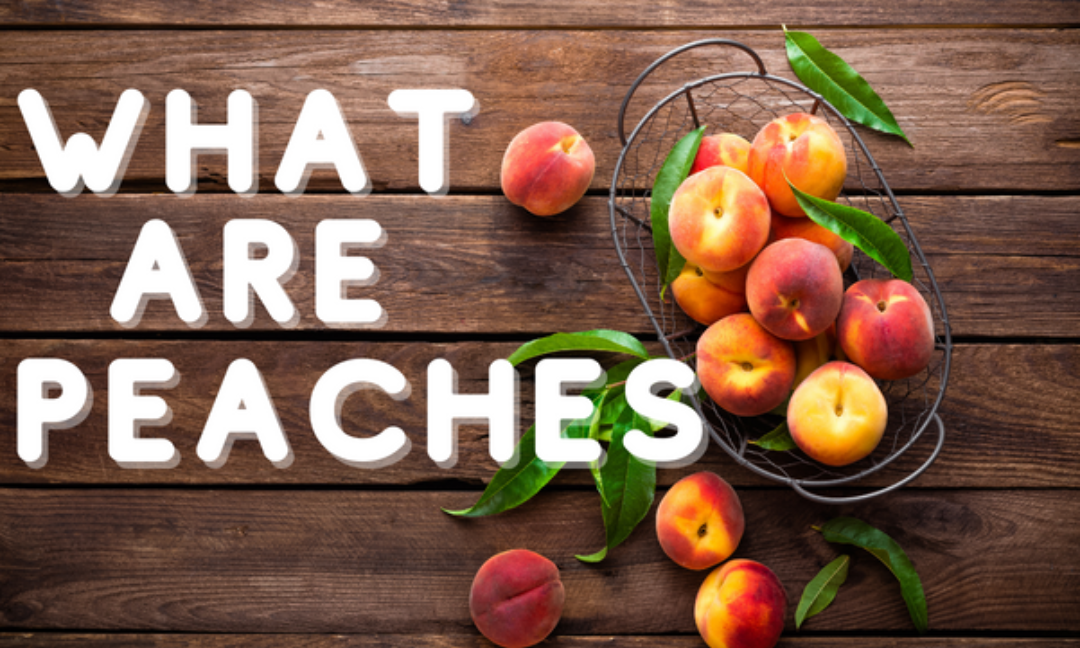What Are Peaches?
Written By: Girija Mayuree
Edited By: Girija Mayuree
Designed By: Howie Nguyen
Published By: Howie Nguyen
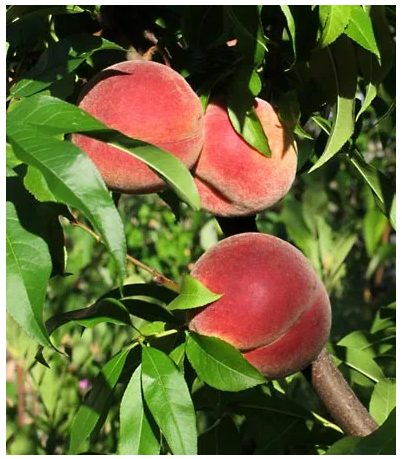
Peaches are an extremely versatile fruit. They can be eaten raw or cooked, baked or griddled, and still keep their juicy, sweet nature. These fruits grow on peach trees (Prunus persica), a fruit tree that is part of the rose family. They grow in mild climates, as they need both cold winters and warm weather to grow.
Peaches are speculated to have originated in China and were only introduced to Europe around 2000 years ago. From there, explorers brought them to Canada, and by the 1880s, peaches were an important tree in Ontario. Peach trees are 3-5 meters tall with long, narrow, pointed leaves (Layne & Tremblay, 2013). They also have pink flowers and fuzzy fruits that vary in color from orange to pinkish yellow. Peaches without the fuzz are nectarines.
In Canada, peach trees only live for about 10-20 years and begin to bear fruit when they are about 2-3 years old. These fruits, unlike many other types of stone fruits, can’t handle much cold and can be injured or even killed if exposed to weather under -23°C. It’s because of this that most peaches in Canada grow in either Southern Ontario or Southern British Columbia.
Health Benefits of Peaches
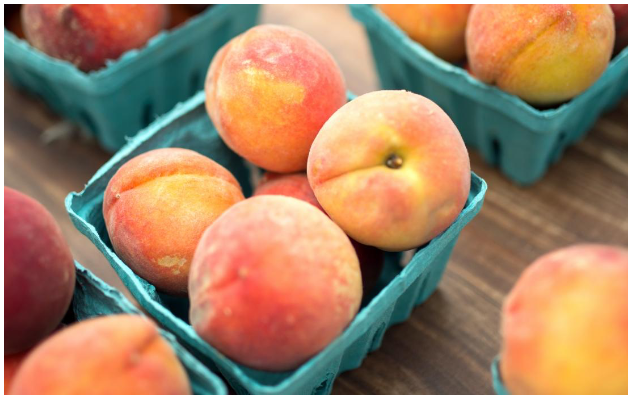
The health benefits of eating peaches are numerous. They provide numerous vitamins and also have antioxidants (plant compounds that protect your body against disease and ageing). They are also high in vitamins, fiber and minerals.
A medium sized peach has two grams of fiber, half of which is insoluble. Insoluble fiber helps food move through the gut. Soluble fiber, which is the leftover gram, is food for the good bacteria in the body. Once these bacteria’s are fed, they create short-chain fatty acids, like acetate, which reduce inflammation in the gut. They also help with the symptoms of various digestive diseases. Peach blossoms also help with digestion, and they are used to treat digestive disorders in Chinese medicine.
Harvesting Your Own Peaches
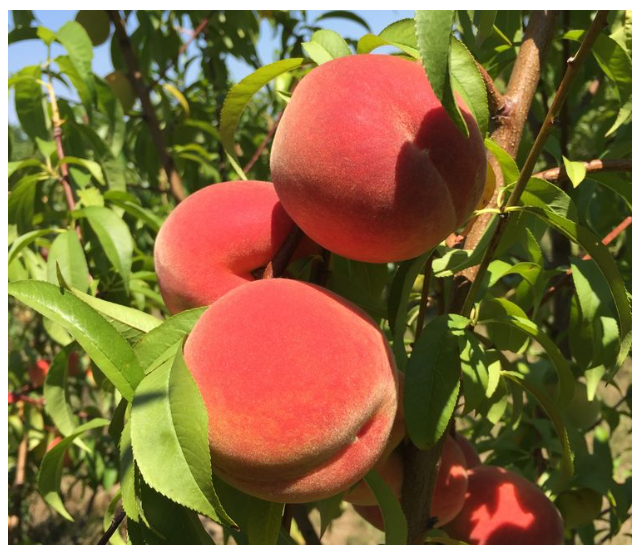
Growing peach trees from the seed is fairly simple, and after a few years, will be very rewarding. All you need is a peach pit, a cracking tool (such as a nutcracker or a hammer), slightly moist potting soil, a plastic bag, and a refrigerator. Here’s how you do it:
- Crack open the peach pit and take out the seed. (Note: You can use the pit without cracking it open, but it germinates faster when using just the kernel.)
- Fill the plastic bag with the soil and seal it.
- Put the bag in your refrigerator.
- Check on the pit in a couple of months and remove the seed once it has roots about 1.5cm long.
- Transfer the seedling into a container.
- Put the container in a sunny area and give the seedling enough water to keep its soil moist.
- Plant the seedling outside in early spring.
- Fertilize it (also in early spring) with a slow-release fertilizer rich in phosphorus and low in nitrogen.
- Give it 4-6 liters of water every week.
(Once the tree matures, you can change this every week and a half.) - Prune your tree annually. (For the first three years, do it in the early summer, and then switch to late April.)
- A month after the peach tree blooms, remove all the smaller peaches so that the remaining ones are 15-20 centimeters apart (this gives them more nutrients).
- Protect your tree from diseases such as peach leaf curl and brown rot by applying fungicides and pesticides.
(Instructions taken from masterclass.com)
Peach Treats
Peaches are great in lots of recipes, but perhaps the most common of them all is peach cobbler. So, if you’re feeling inspired after all this peach talk, here is a recipe for a peach cobbler and a peach oat smoothie to go with it.
PEACH COBBLER
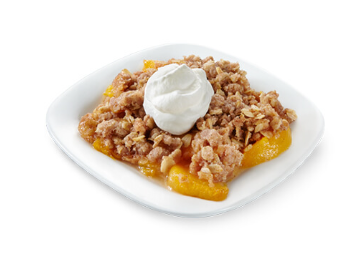
(Recipe taken from Tastes Better From Scratch)
Prep time: 15 mins. Cook time: 40 mins.
Servings: 9 Calories: 386
Ingredients:
Filling
- 5 peaches, peeled, cored and sliced
- ¾ cup granulated sugar
- ¼ teaspoon salt
Batter
- 6 tablespoons butter
- 1 cup all-purpose flour
- 1 cup granulated sugar
- 2 teaspoons baking powder
- ¼ teaspoon salt
- ¾ cup milk
- ½ teaspoon ground cinnamon
Instructions:
(If using canned peaches, use one quart jar of undrained peaches and skip to step three)
- Combine peaches, sugar and salt and add to a saucepan
- Cook on medium heat until sugar has dissolved and the peach juice comes out. Remove from heat and set aside.
- Slice butter and place in 9 by 13 inch baking pan. Preheat oven to 350°F. Place baking pan inside while oven preheats, and take it out once melted.
- Mix the flour, sugar, baking powder, and salt in a large bowl. Stir in the milk until they are all mixed in properly.
- Pour mixture into the baking pan and spread evenly over the melted butter.
- Add peaches and juice (or canned peaches) on top of the mixture. Spread cinnamon over them generously.
- Bake at 350 degrees for about 38-40 minutes. Serve warm, with a scoop of ice cream (optional).
PEACH OAT SMOOTHIE (VEGAN)
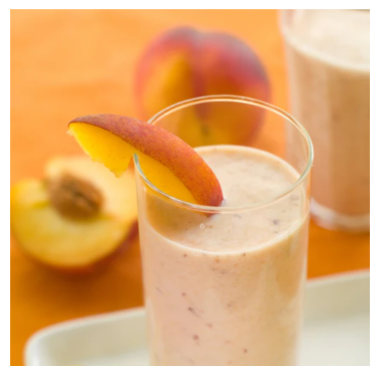
(Recipe taken from Minimalist Baker)
Prep time: 10 mins.
Servings: 1 Calories: 142
Ingredients:
- 1 ripe peaches (quartered, pits removed)
- 6g chia seeds
- 11 g rolled oats (gluten-free for GF eaters)
- ¼ frozen banana (peeled before freezing)
- 30 ml fresh orange juice
- 60 ml unsweetened almond milk
- 7.5 ml agave, maple syrup, or a pinch of stevia (optional for added sweetness; can be substituted for honey for non-vegans)
Instructions:
- Place all ingredients in a blender. Let them sit for 5-10 minutes to allow oats and chia seeds to soak.
- Blend until smooth.
- Serve immediately.
(Note: To thicken consistency, add another quarter of the frozen banana. To thin consistency either add more orange juice or almond milk.)
References
Allen, L. (2019, August 9). Old Fashioned Peach Cobbler. Tastes Better From Scratch. Retrieved March 26, 2022, from https://tastesbetterfromscratch.com/peach-cobbler/
Baker, M. (n.d.). Vegan Peach Oat Smoothie. Minimalist Baker. Retrieved March 26, 2022, from https://minimalistbaker.com/peach-oat-smoothie/
How to Grow a Peach Tree in Your Backyard – 2022. (2020, November 8). MasterClass. Retrieved March 26, 2022, from https://www.masterclass.com/articles/how-to-grow-a-peach-tree-in-your-backyard
Layne, R. E., & Tremblay, C. (2013, April 1). Peach. The Canadian Encyclopedia. Retrieved March 23, 2022, from https://www.thecanadianencyclopedia.ca/en/article/peach
Maschler, T. (n.d.). Fruit on a peach tree [Photograph]. Encyclopaedia Britannica. Retrieved April 11, 2022, from https://www.britannica.com/plant/peach
Petruzzello, M. (2020, February 26). peach | Fruit, Description, & Facts | Britannica. Encyclopaedia Britannica. Retrieved March 23, 2022, from https://www.britannica.com/plant/peach
Shane, B. (n.d.). Brightly-colored Michigan peaches are being harvested now. [Photograph]. Michigan State University. Retrieved April 11, 2022, from https://www.canr.msu.edu/news/peaches_and_the_science_behind_them
[The vitamin C in peaches may reduce the risk of certain types of cancer.]. (n.d.). [Photograph]. Retrieved April 11, 2022 from https://www.medicalnewstoday.com/articles/274620
10 Surprising Health Benefits and Uses of Peaches. (2019, January 17). Healthline. Retrieved March 26, 2022, from https://www.healthline.com/nutrition/peach-fruit-benefits

